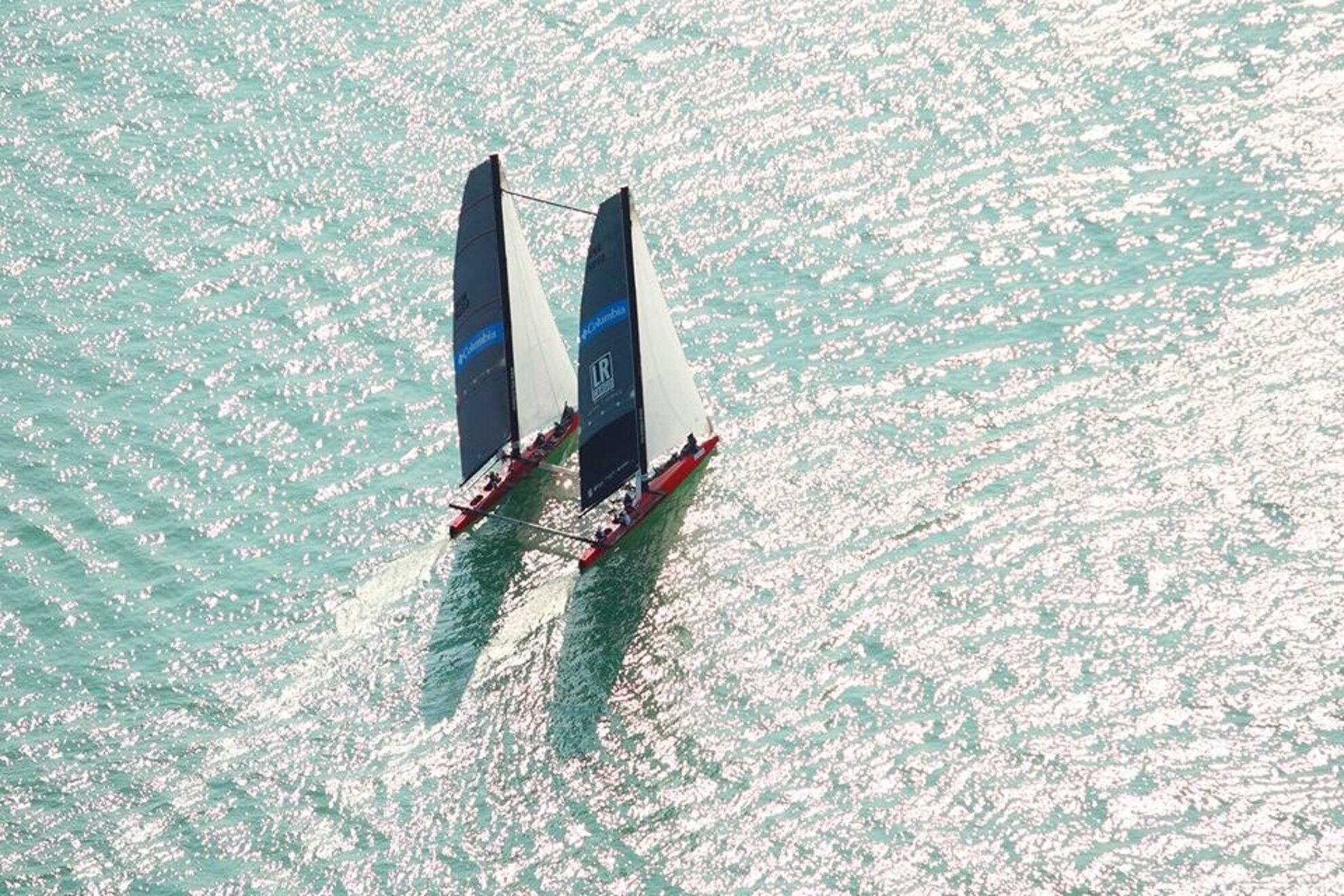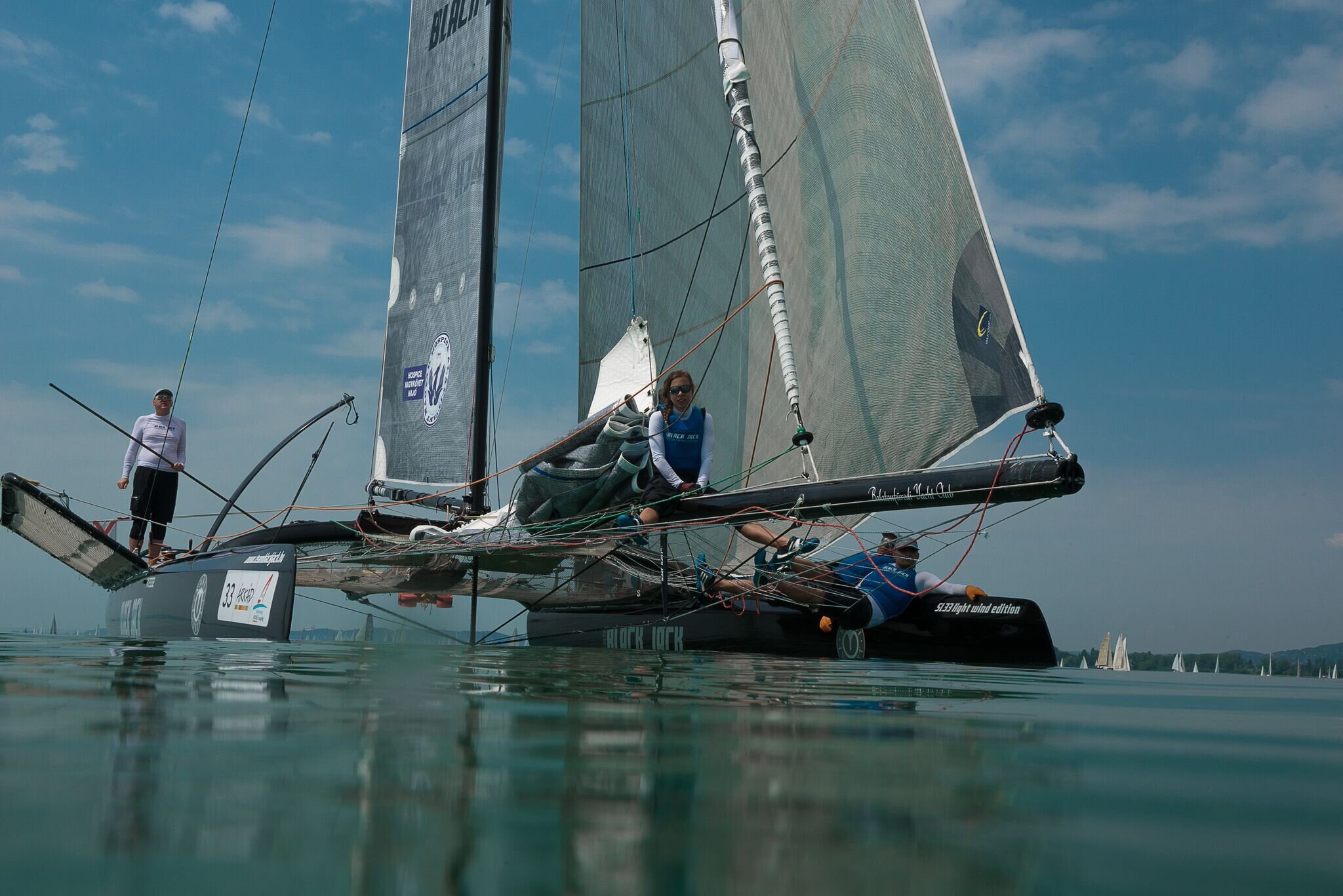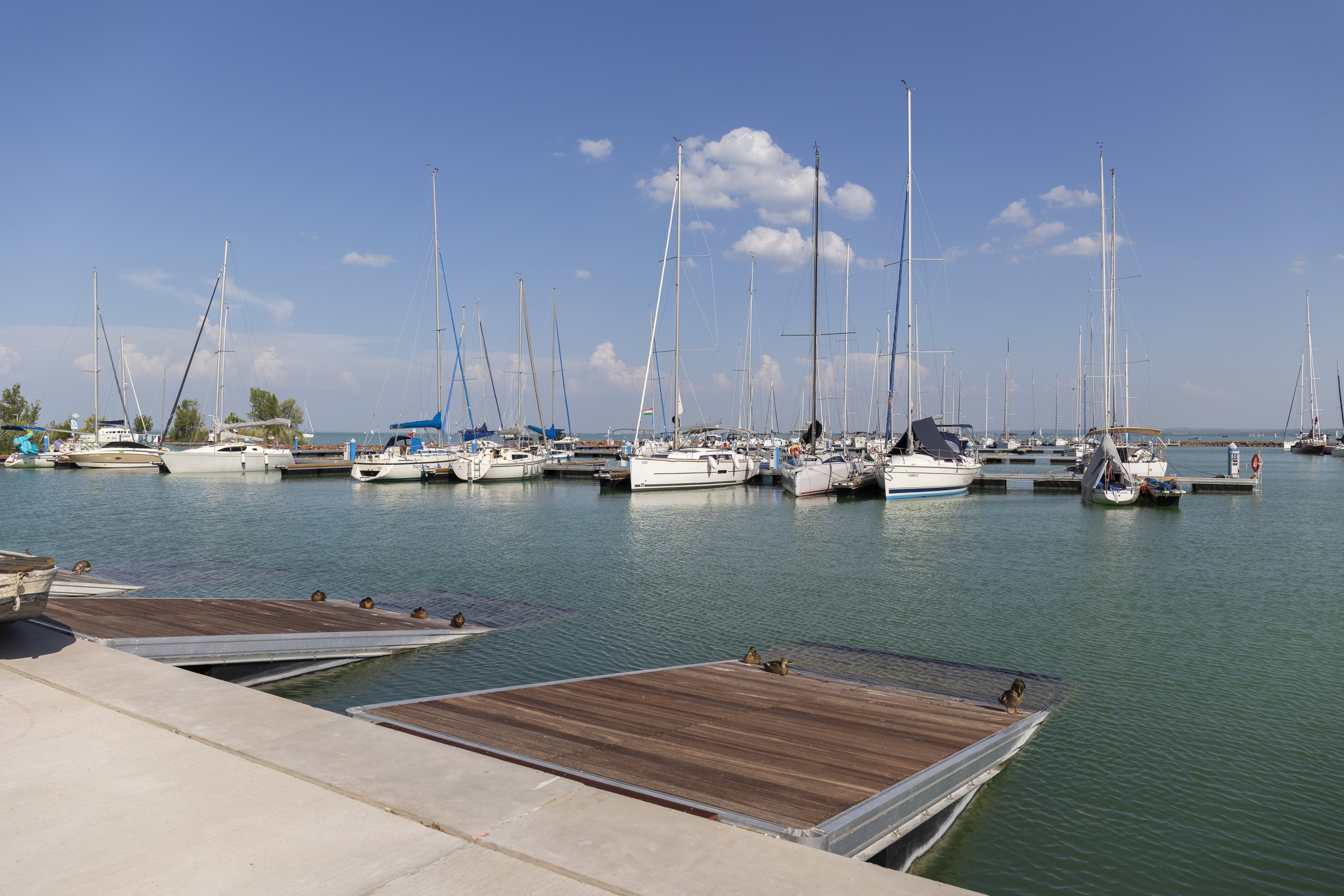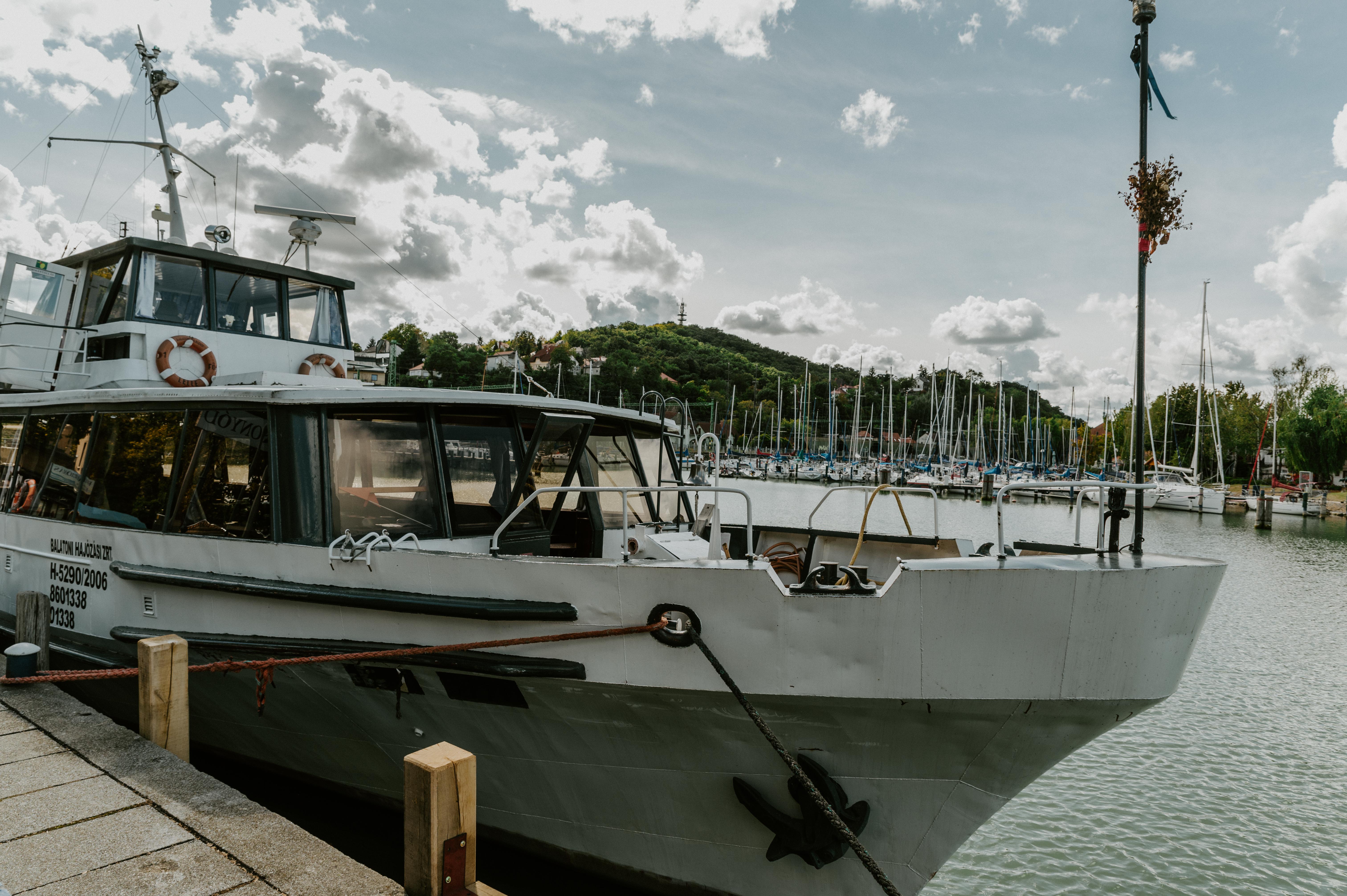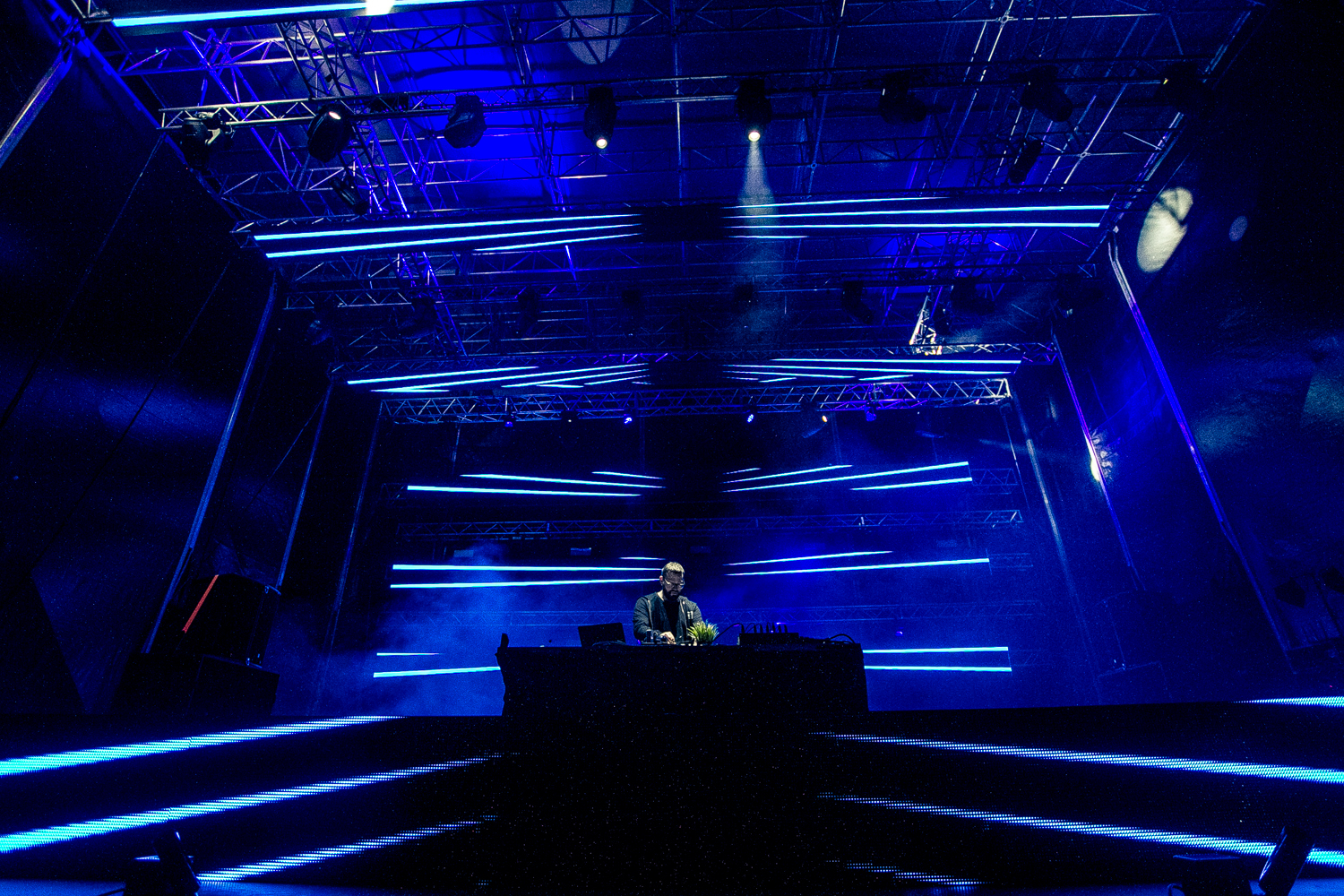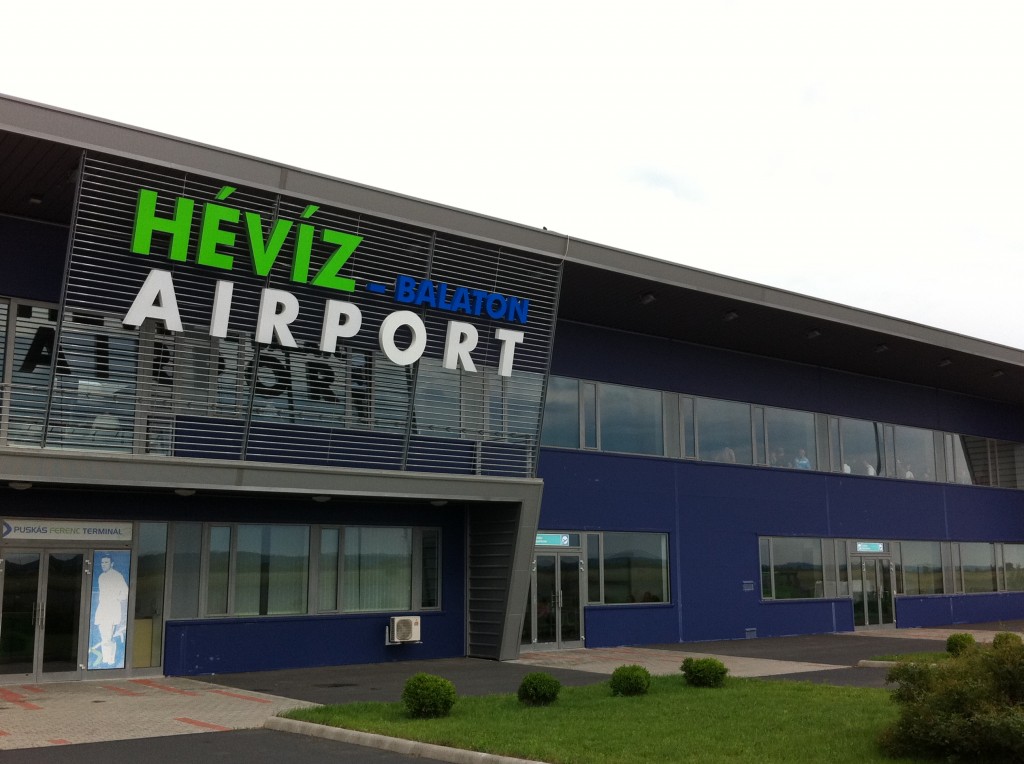Whenever I compete at Kékszalag, it’s always an extreme race. Last year there was a storm, 50 km/h winds and rain, so we completed the full circle in a record of 9 hours – we were very scared and cold, and by 6pm we were already in the harbour eating our dinner. By comparison, by the same time this year we were not even close to the Keszthely buoy, and we spent a good 19 hours on the water – or rather above the water – on the first truly hot summer day of the year.
I’m a member of Team Black Jack, which competes on an SL33 catamaran – the ship is about 10 m long, its mast is 20 m tall, and the whole vehicle without the crew weighs a mere 600 kg. It is especially fast when the wind is relatively weak: thanks to the gigantic spinnaker and the light weight of the ship, we can sail three times as fast in 5-10 km/h wind speed. There are five of us on board: on the one hand, we can delegate tasks more effectively this way; on the other hand, there’s enough people to balance the ship depending on where the wind blows from.
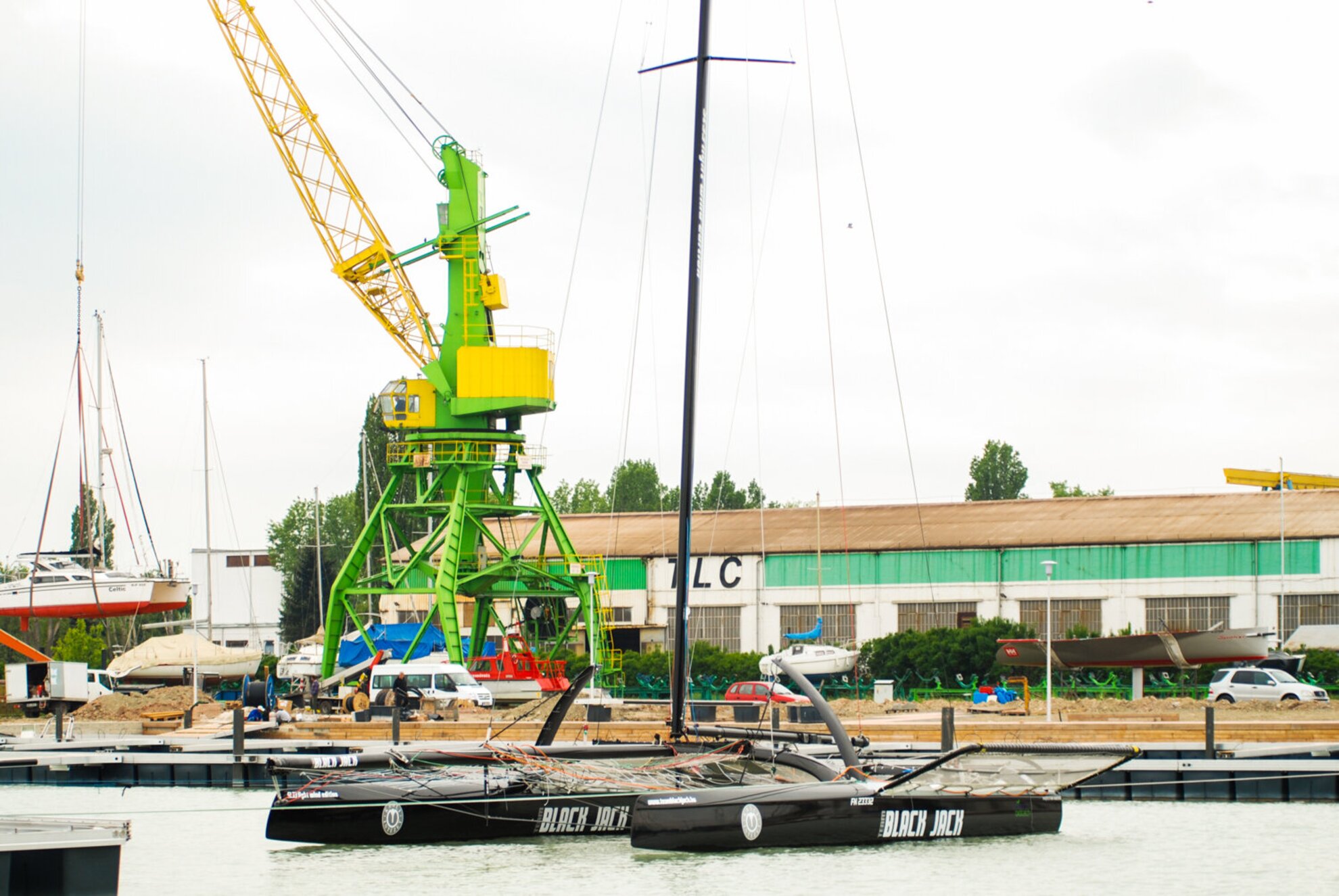
In the days preceding Kékszalag, crew members living further away move to Balatonfüred – for example, this is when the team of the Keszthely-based Fifty-Fifty or Lelle’s RSM-DTM as well as ships from abroad arrive. This year’s foreign contestants were Natur Aqua and Orange-Utan from Germany and Safram from Switzerland. All of these are catamarans, so we definitely felt that this year’s group of participants was going to be really illustrious.
On Monday and Tuesday we held the last few training sessions, which were meant to be pretty easy, but were not actually, we scrubbed the ship for the last time to remove algae, checked the ropes, changed worn-out parts and packed all the necessary equipment inside the hull like the anchor and the grappling iron. Being the only female member of the crew, I had an important task: I had to stock up on food and drinks for the regatta. It’s not easy to plan something like this: you need food that is easy and quick to eat, and provides you with lots of energy, keeping in mind that it should also withstand heat, seeing as there’s no fridge on the catamaran. I packed 18 litres of frozen water and sports drinks, sandwiches with salami, apples, peppers and tons of wine gums, fruit gels and space food. Our skipper Rozsda (Attila Nagy – the ed.) told us to get chewing gum too so that we could “brush our teeth” if the race got dragged out. I hoped that similar to last year we would not need this hack this time either, but I was wrong.
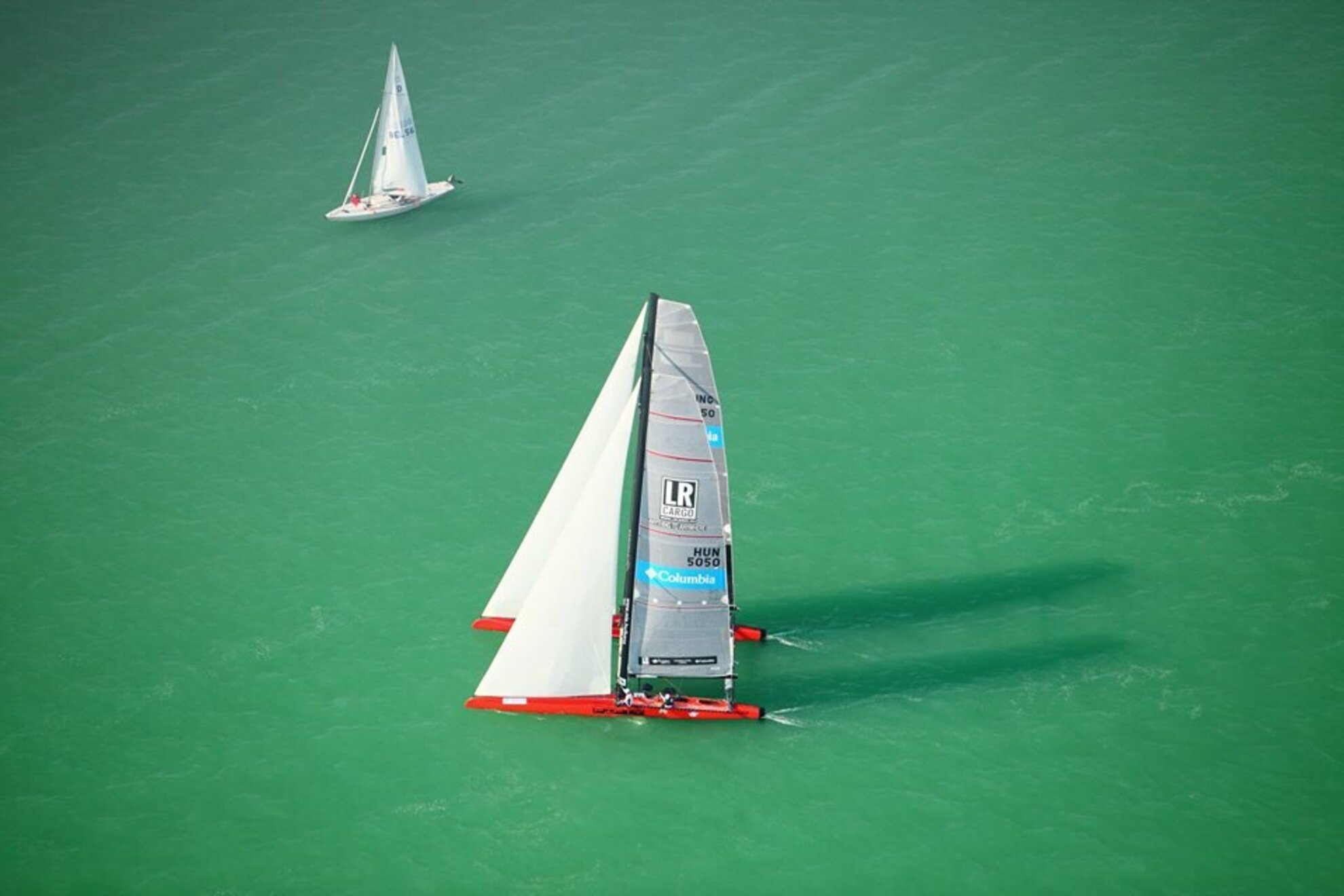
The regatta started at 9am on Thursday, 2 July. I was super nervous, I couldn’t even eat my breakfast, my heart was pounding really fast, but the minute we heard the shot it all went away, and I started focusing on the task ahead. We didn’t start very fast. The wind forecast said there would only be light winds, but even those had died down by the time the race was supposed to kick off, so all the light catamarans were making their way slowly toward Kenese on two hulls instead of racing along on one. In such weak winds you have to weigh the ship down more toward the front, so I had the honour of sitting on the bowsprit at the nose of the ship to help with the balance. From there I could see all our fellow contestants fairly well, and I was relieved to note that even the ones sailing in deeper water could not go faster than us – we were trying to harness the winds (or rather breeze) close to the south shore.
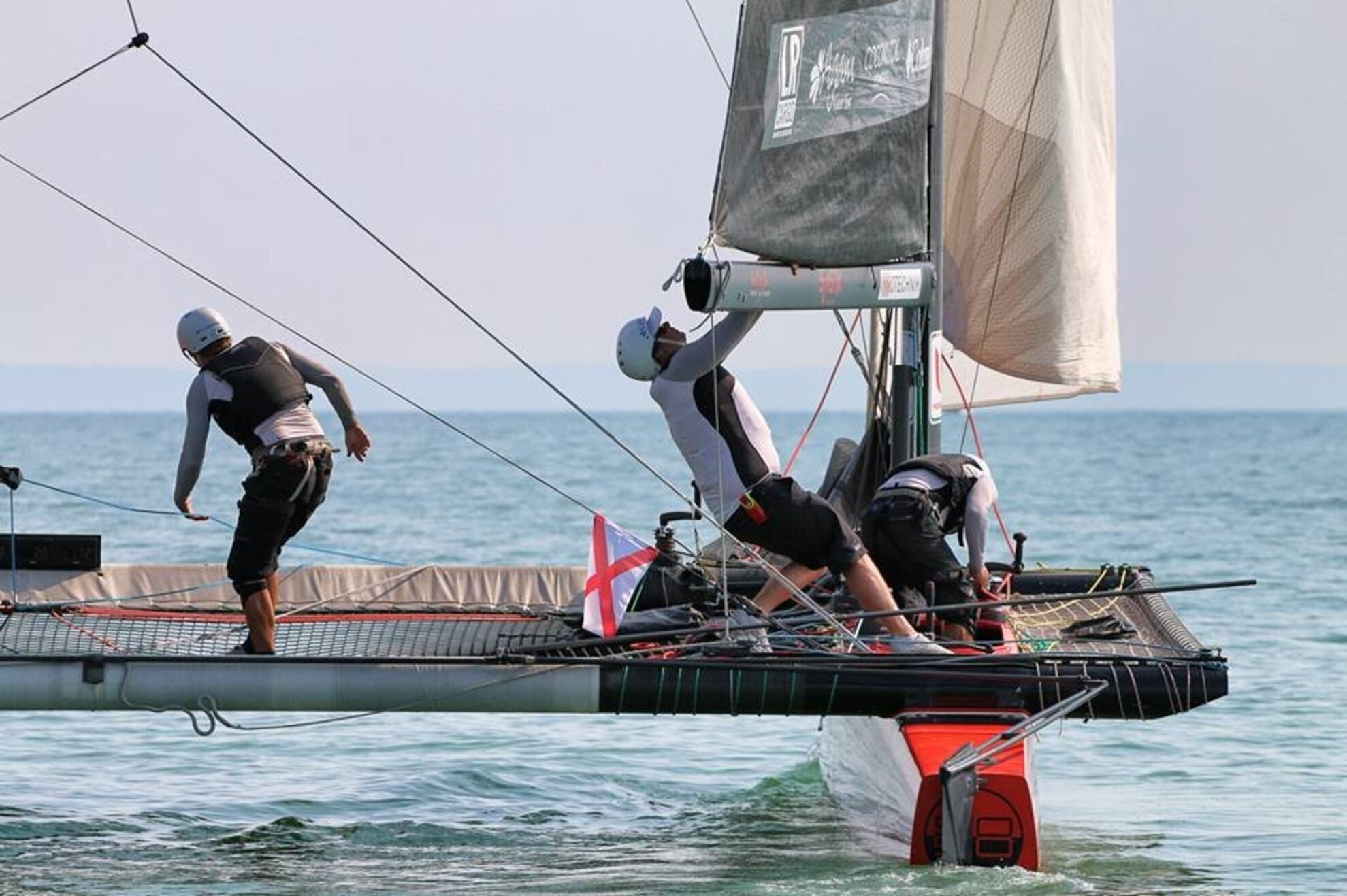
Later we floundered over to the region of Alsóörs and ended up among the large keelboats – they were as surprised to see us as we were to see them. Black Jack can go fast in weak wind, but even cats cannot move in totally calm weather. We were stuck on the lake, listening to the regular pounding of the nearby marina’s pile driver. Thanks to a stray breeze, we finally arrived in Kenese, and even managed to catch up with the other cats.
Safram and Farkas Litkey’s ship were already a bit further ahead, whereas Fifty-Fifty, Orange-Utan and the two other familiar liberas (Raffica and Principessa) were still pretty close, and RSM-DTM passed the first mark behind us. From here on it was a lot of fun sitting on the bowsprit! Our skipper knew well what the eastern end of the lake was like, so he steered the ship in a curve along the south shore that deflects the wind, sailing under the pack – I could watch from the front row as our ship went past the other SL-33, Raffica and Fifty-Fifty, reaching the Siófok buoy in third place, which is quite something. That’s when I knew I was satisfied with this year’s Kékszalag no matter what happened next.
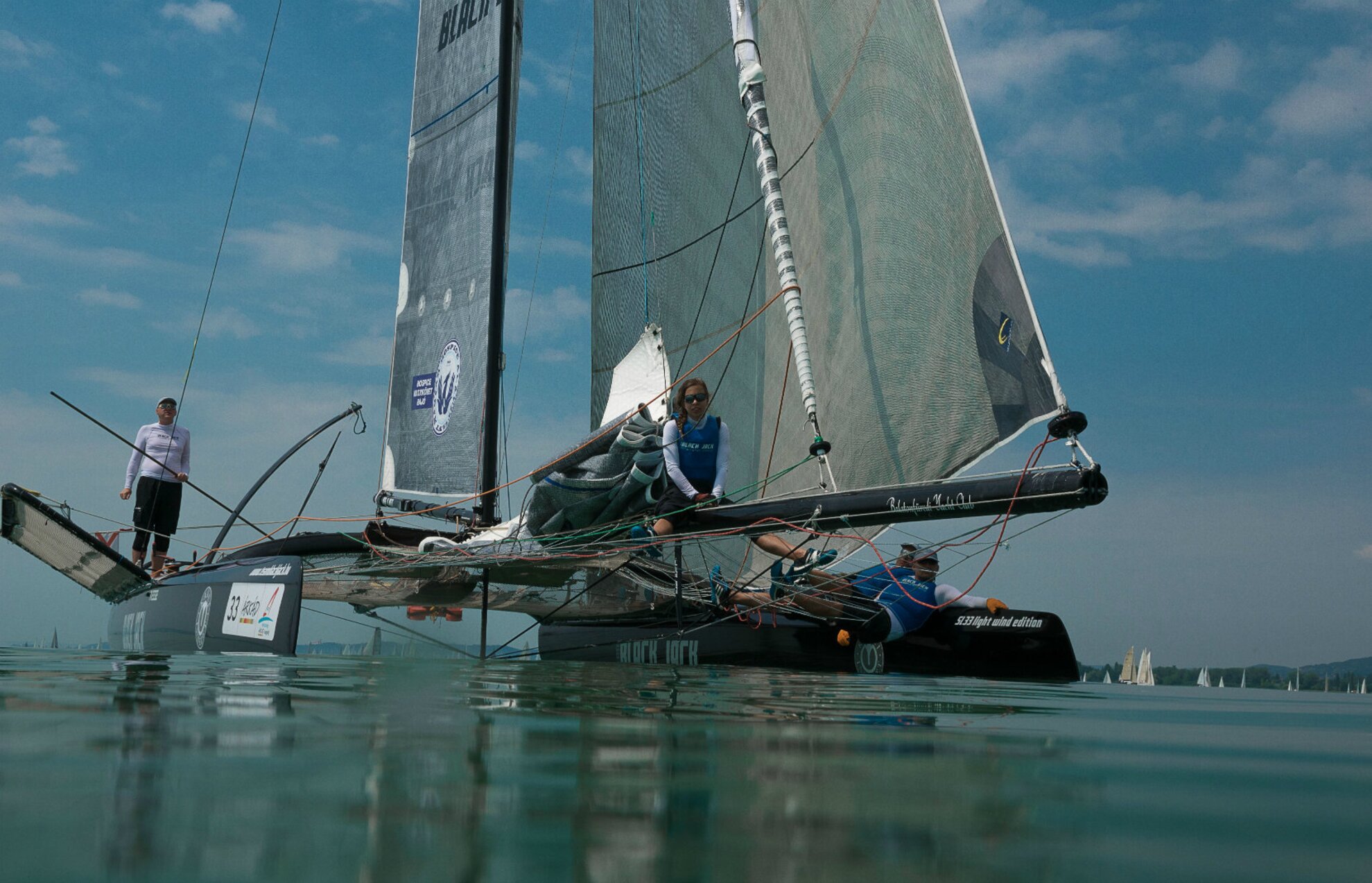
We were still ahead at the Tihany channel, but the friendly ferries really wanted to hang out with us from both directions. It’s so funny how different people can interpret the well known signs of communication in different ways: we were gesticulating angrily at this huge monster weighing several tons as it was passing us by a mere 2 metres, and the passengers on board were happily waving back at us… In the end no one got hurt, and at about 2 o’clock in the afternoon we continued our way into the western basin of Balaton. To give you an idea of how slow we were going: the stretch we completed in more than 5 hours at the race took us less than two in around 15 km/h wind speed a few weeks earlier.
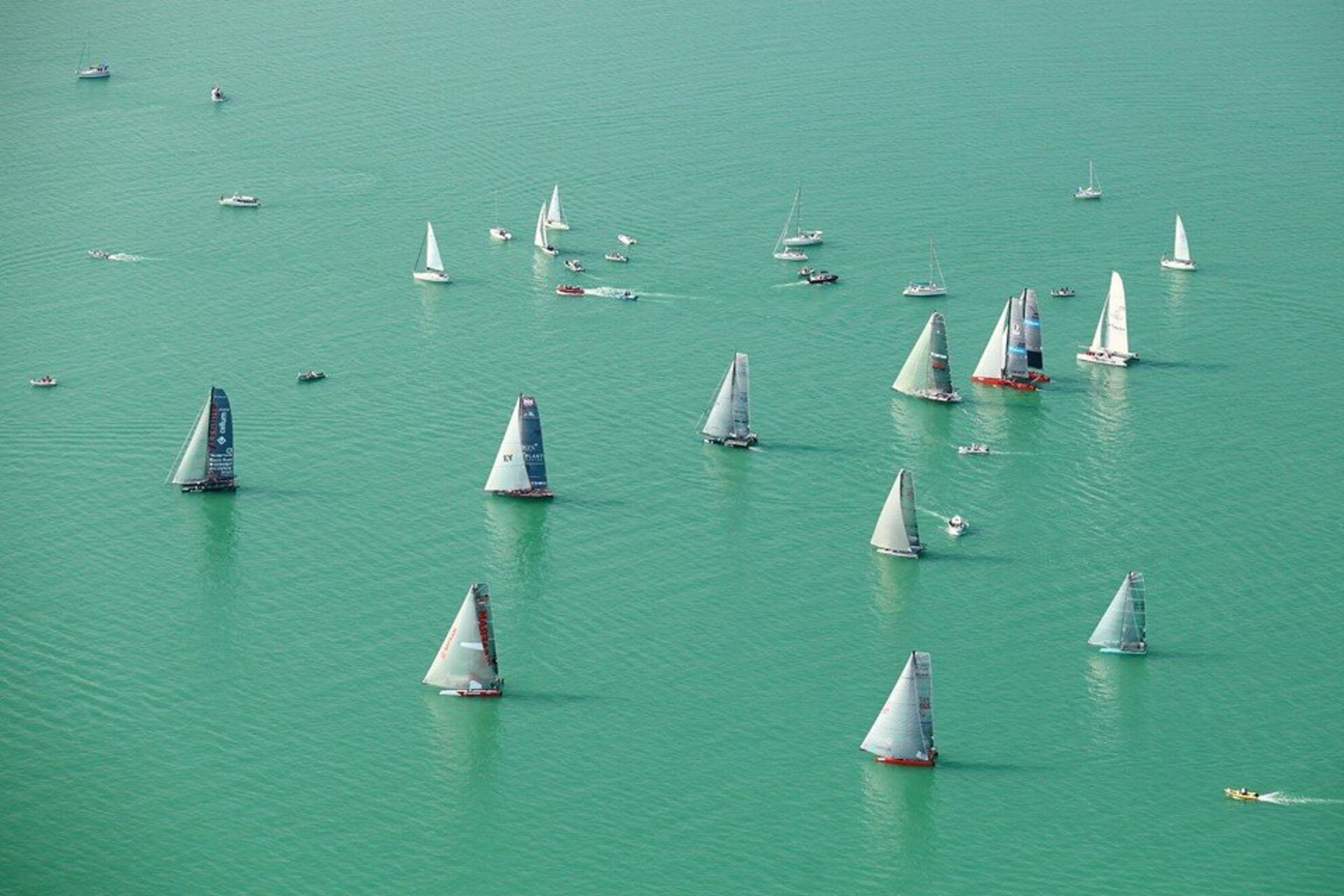
When we arrived in the West Balaton Basin we saw that the Swiss Safram and the ship of 11-time Kékszalag champion Farkas Litkey were up north, so there was no question about it: we headed toward the south shore. A big portion of the advantage we had gained melted away because the north-easterly wind hit us from the back, propelling our opponents forward – they were on our heels really fast. Yet, we were still in the lead, and I could tell by looking at the two ships in the middle of the lake that had been ahead of us that we were in number one position! “Remember the town Balatonfölvár, that’s where we were still winning Kékszalag!” said Rozsda with a grin, and I became even more certain that regardless of when and how we cross the finish line, this Kékszalag was worth it.
The shallow water of the south shore favoured us, as we had devised a simple, but quite effective trick for the race: we tied two small wooden pegs next to the rudders, which we drew up together with the daggerboards. This gave us minimal drag, so we could sail out toward the beaches. We watched Orange-Utan, the same kind of ship as ours, follow us bravely, founder and then come to a complete halt not once, but twice! After an incident like that, it always takes a little time to free the ship from the hard southern mud.
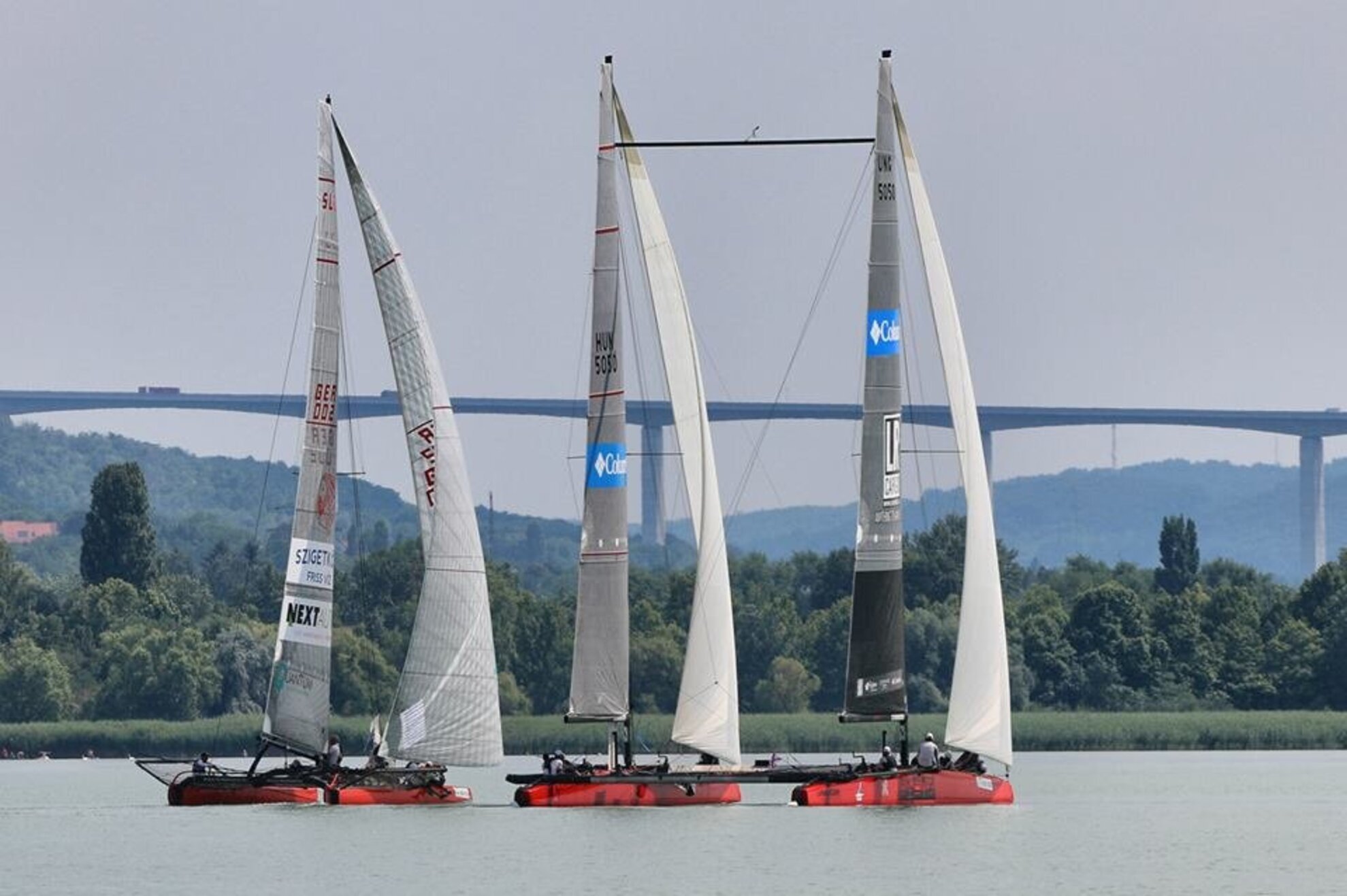
The 50-foot Fifty-Fifty was right behind us, and we couldn’t put a big enough distance between us and the monohull Raffica and Principessa. In the meantime, the Safram-Litkey duo swept down toward the south shore, and the band of catamarans was stuck, as the wind failed to reach us. By 6pm my enthusiasm for the race and the bowsprit had waned quite a bit – sitting there, I started to become really uncomfortable, hot and hungry despite devouring tons of sugar. We were blinded by two suns, just like on Tatooine: the one in the sky and its reflection on the water. It was a strange phase. I began entertaining the idea that we would never reach the harbour, and sail in endless circles around Balaton forever, which, strangely enough, was what gave me strength.
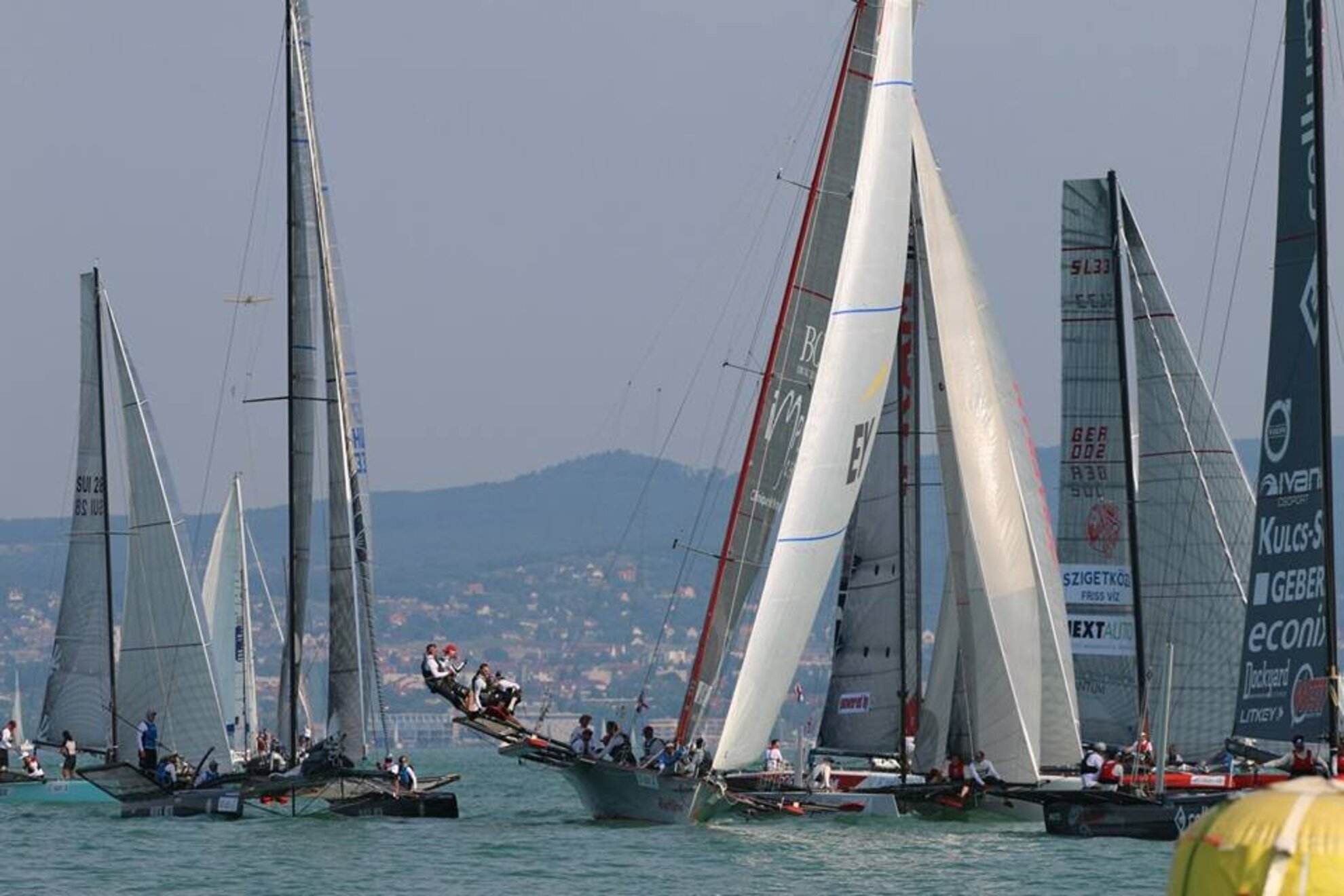
It seemed that my fellow crew members needed to fill their tanks too, so I asked them if they wanted a sip of a super warm energy drink and some cashew nuts. Tired and jolly, we sailed on into the sunset, along the golden bridge painted by the sun toward the north shore where we hoped we would be refreshed by the wind. It felt good to help our fierce group reach the opposite shore – only some of the cats risked staying on the south side. The northerly wind started to rise, but it spoiled the sunset for us that Orange-Utan slided past us. It was almost like seeing a mirage: “Where’s the breeze? There, just in front of us! It’s here, I mean it’s supposed to be here… But it’s not. Wow, something is coming! But where does the wind come from when the water is like a mirror?” I had never seen Balaton winds be so deceptive before.
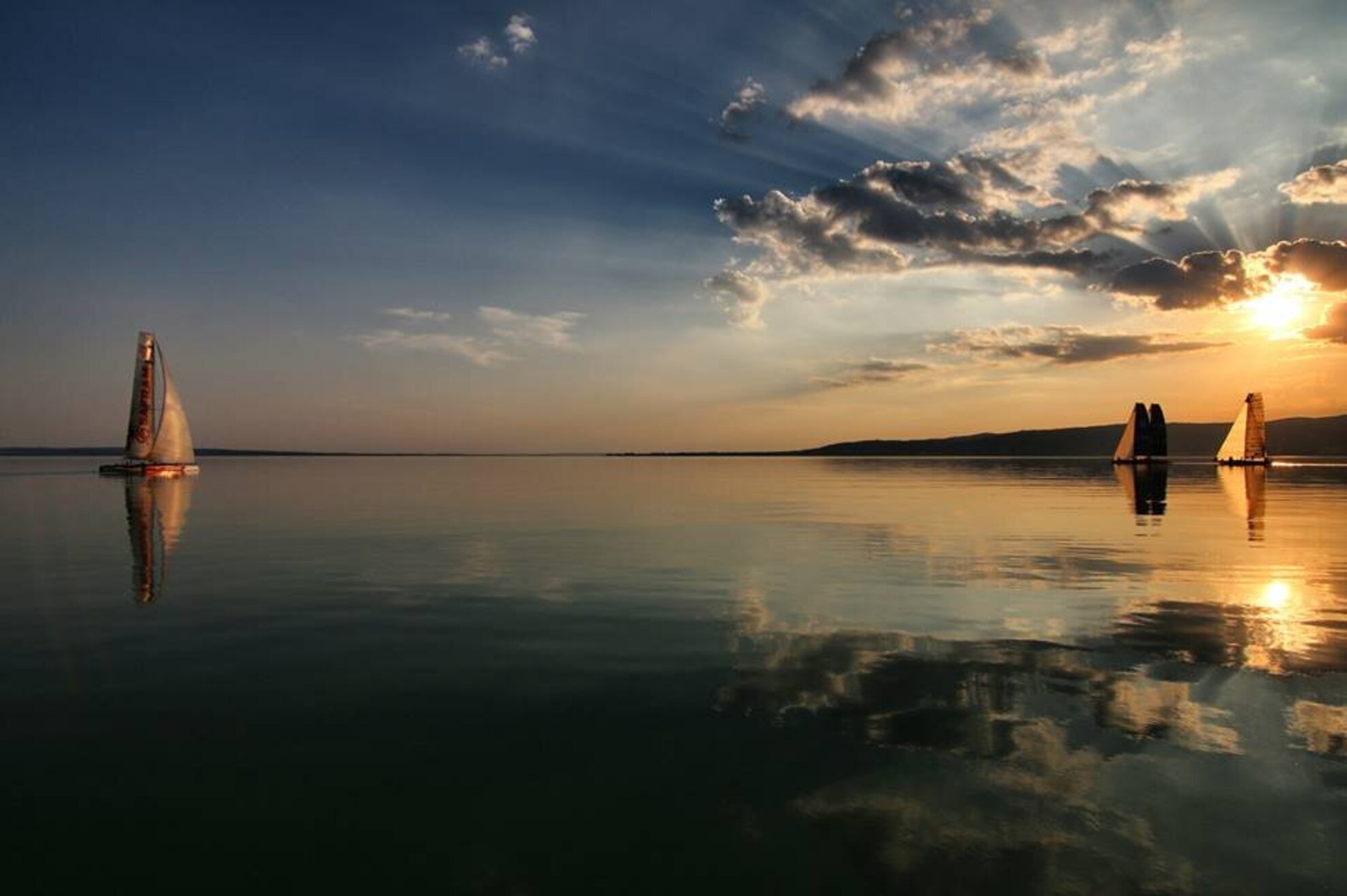
The sun had already set by the time we reached the buoy off Keszthely. The front of the pack was still together, the first ten ships passed the mark within minutes of each other. We knew that the ship coming out first of the Keszthely Bay will have the chance to gain a huge advantage, but this area has always been known as one of Balaton’s Bermuda Triangles. The moon was hiding behind a big black cloud, so we pushed ahead in almost complete darkness, which was dangerous, as the monohull pack was coming toward us from the opposite direction with some boats being illuminated and others being pitch black. Everything seems closer, bigger and faster in the dark. A small, 28-foot ship whizzed past us, which I actually thought was Fifty-Fifty, and we almost slammed right into Principessa after a sharp turn. The lights on the shore and the GPS give you some bearings, but you cannot see the wind. Sore and stiff, I could finally climb down from the bowsprit to get ready for the broad reach stage.
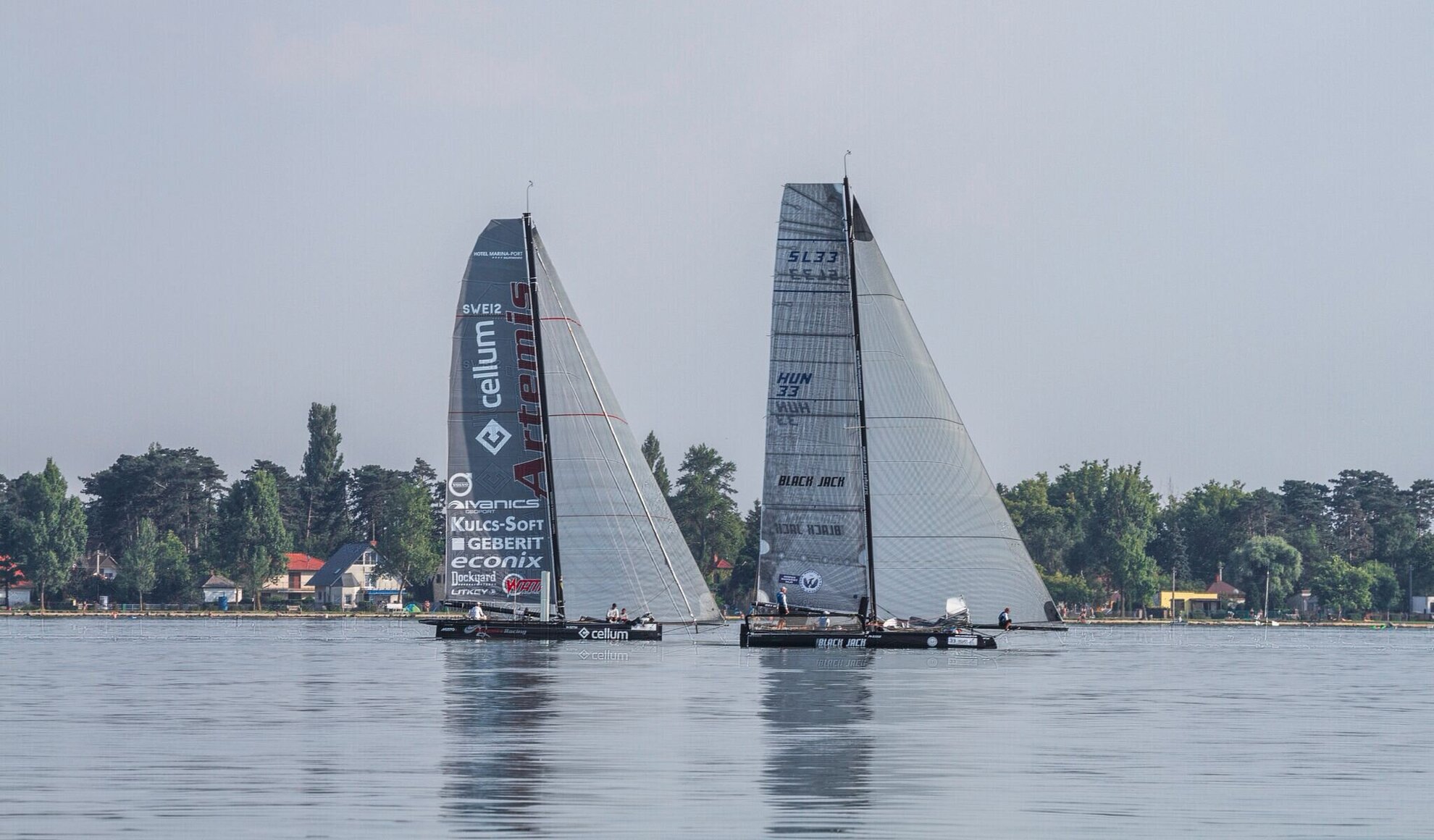
We could only hope that the wind would pick up and that our journey home would be smoother. Safram, Fifty and Litkey were supposedly ahead of us, but we couldn’t see the rest of the teams, and the battery of our GPS ran out. The wind finally arrived and we rode somewhere in the middle of the lake toward home! We had had no night-time training sessions, so we were sailing in safety mode, not going too fast. Sometimes we saw other ships zigzagging around us, they looked like they were going at a great speed, but we met them again and again, so we couldn’t have been much slower.
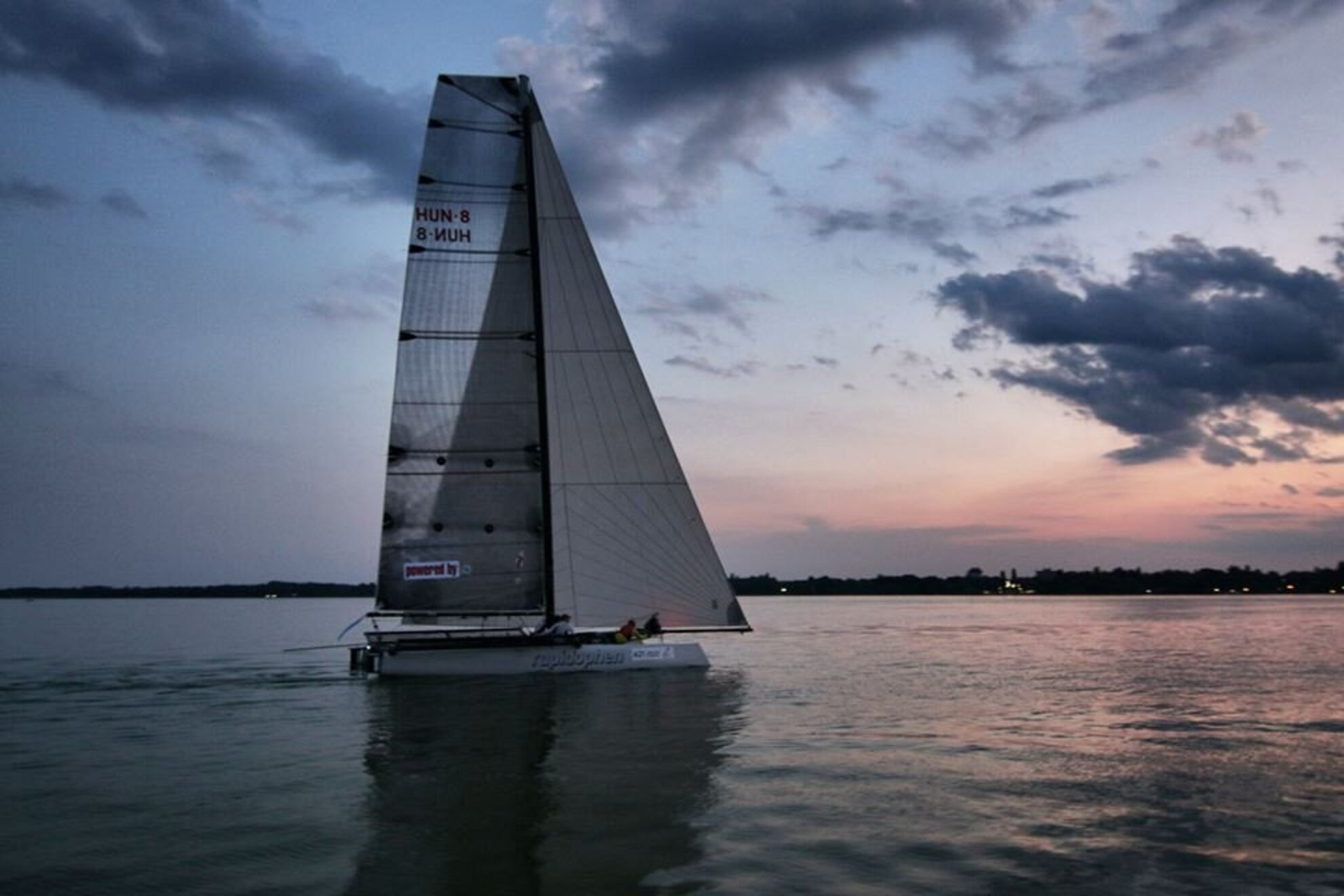
The moon came out when we reached Lelle. It’s really unbelievable how much light it can give off and how much safer I felt when I saw the glistening of the waves. The wind was blowing at 20-25 km/h at this point, so thankfully we didn’t have to stare at the dark Badacsony for hours. I was already past the stage of being exhausted, I didn’t feel tired, but sometimes I just stared into the distance and my arms and legs were not so limber anymore.
Around 3am we reached the Tihany channel: it was quite tricky navigating around the cardinal marks in the darkness, but soon after that we glimpsed the wonderful, blinding, one million volt searchlight signalling the Füred finish and redemption. We were a couple hundred metres behind Orange-Utan, which had sneakily overtaken us and was sailing in fourth place, and RSM-DTM in fifth, and we were speeding happily in their wake. The super searchlight made it really hard to notice the small, blinking buoy at the finish, but by then we relied on our fine-tuned bat sensors. After 19 hours of exhausting sailing that took a lot of fight, strategizing and playing the waiting game, we crossed the line in sixth place. If someone had asked me before the race if I would be happy with this result, I’m not sure I would’ve said yes, but after a day like this I simply nodded. The first ten ships were in constant battle throughout the entire time, and we all deserved a pat on the back after such an exciting regatta.
